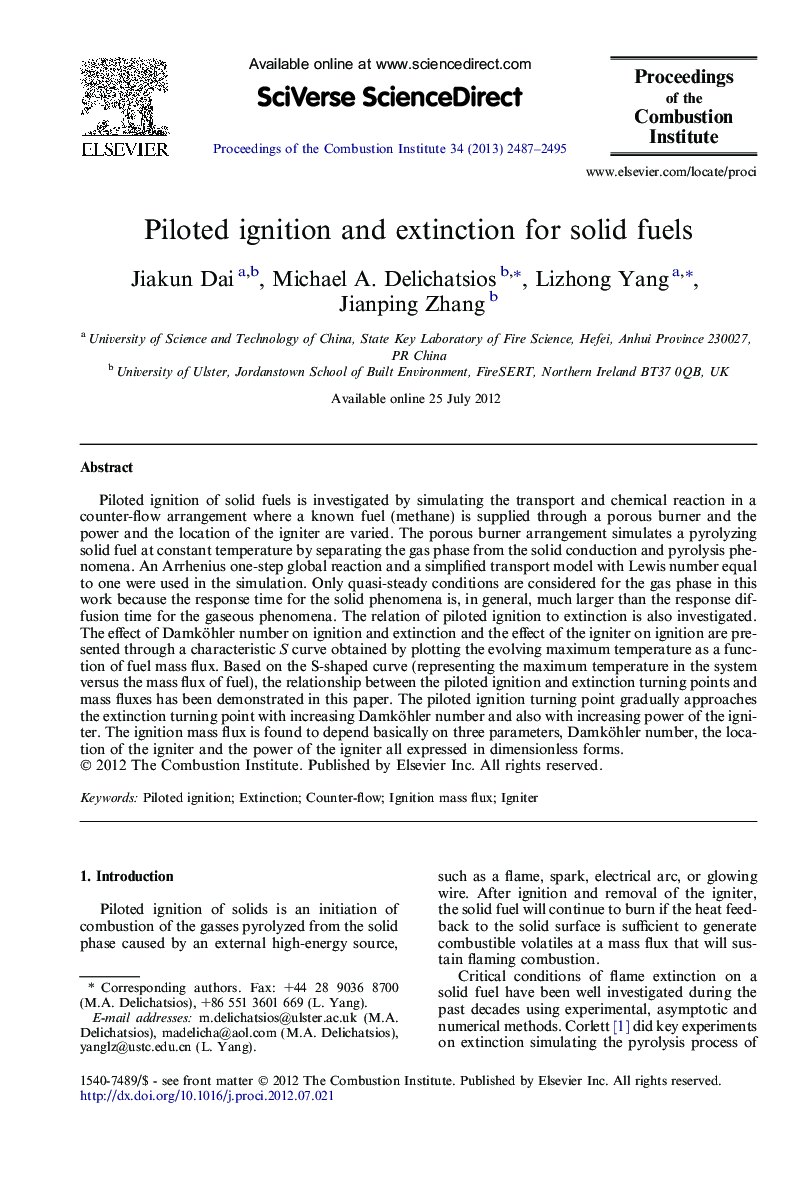| کد مقاله | کد نشریه | سال انتشار | مقاله انگلیسی | نسخه تمام متن |
|---|---|---|---|---|
| 240877 | 1427922 | 2013 | 9 صفحه PDF | دانلود رایگان |

Piloted ignition of solid fuels is investigated by simulating the transport and chemical reaction in a counter-flow arrangement where a known fuel (methane) is supplied through a porous burner and the power and the location of the igniter are varied. The porous burner arrangement simulates a pyrolyzing solid fuel at constant temperature by separating the gas phase from the solid conduction and pyrolysis phenomena. An Arrhenius one-step global reaction and a simplified transport model with Lewis number equal to one were used in the simulation. Only quasi-steady conditions are considered for the gas phase in this work because the response time for the solid phenomena is, in general, much larger than the response diffusion time for the gaseous phenomena. The relation of piloted ignition to extinction is also investigated. The effect of Damköhler number on ignition and extinction and the effect of the igniter on ignition are presented through a characteristic S curve obtained by plotting the evolving maximum temperature as a function of fuel mass flux. Based on the S-shaped curve (representing the maximum temperature in the system versus the mass flux of fuel), the relationship between the piloted ignition and extinction turning points and mass fluxes has been demonstrated in this paper. The piloted ignition turning point gradually approaches the extinction turning point with increasing Damköhler number and also with increasing power of the igniter. The ignition mass flux is found to depend basically on three parameters, Damköhler number, the location of the igniter and the power of the igniter all expressed in dimensionless forms.
Journal: Proceedings of the Combustion Institute - Volume 34, Issue 2, 2013, Pages 2487–2495